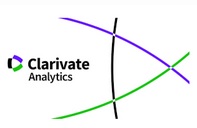Implicación de la memoria visoespacial y fonológica en la heterogeneidad clínica del Trastorno por Déficit de Atención con Hiperactividad (TDAH)
Agencias de apoyo
- Universidad de Murcia
Resumen
Introducción: En los últimos años se ha incrementado el interés en el estudio de los déficits neuropsicológicos que subyacen al Trastorno por Déficit de Atención con Hiperactividad (TDAH). Entre ellos destaca la implicación de la Memoria de Trabajo (MT) en sus dimensiones visoespacial y fonológica. El objetivo del presente estudio fue explorar la relación entre la heterogeneidad clínica del TDAH y el rendimiento de la memoria (a corto plazo y MT) en sus dimensiones fonológica y visoespacial, así como el papel predictor de la MT en la estructura bidimensional del TDAH.
Método: Un total de 116 niños de ambos géneros de entre 8 y 14 años, 76 con diagnóstico de TDAH (26 TDAH presentación predominantemente inatenta y 50 TDAH presentación combinada) y 40 niños control fueron evaluados respecto a su rendimiento en memoria a corto plazo y MT a través de diferentes tareas neuropsicológicas.
Resultados: El grupo TDAH obtuvo un peor rendimiento en las tareas de Memoria de Trabajo visoespacial (Tarea Simon) y fonológica (“Letras y Números” de WISC). Este peor rendimiento se mantuvo también para los subtipos clínicos. El rendimiento en la tarea “Letras y Números” predijo en mayor medida tanto el “déficit de atención” reportado por la familia (β = -.37, p < .001) como por el centro escolar (β = -.37, p = .001), pero sobre todo predijo las dificultades concomitantes del TDAH (β = -.47, p < .001).
Discusión: En línea con estudios previos, el rendimiento del grupo TDAH y sus subgrupos clínicos fue significativamente peor tanto en la Memoria de Trabajo visoespacial como fonológica. Además, la Memoria de Trabajo fonológica predijo de manera significativa la gravedad del déficit de atención, así como la afectación en áreas relacionadas con el TDAH.Descargas
-
Resumen1603
-
PDF 1761
-
PDF1761
Citas
Alderson, R. M., Hudec, K. L., Patros, C. H., & Kasper, L. J. (2013a). Working memory deficits in adults with attention-deficit/hyperactivity disorder (ADHD): An examination of central executive and storage/rehearsal processes. Journal of abnormal psychology, 122(2), 532. DOI:10.1037/a0031742
Alderson, R. M., Kasper, L. J., Hudec, K. L., & Patros, C. H. (2013b). Attention-deficit/hyperactivity disorder (ADHD) and working memory in adults: a meta-analytic review. Neuropsychology, 27(3), 287. DOI:10.1037/a0032371
Baddeley, A. (1992). Working memory. Science, 255(5044), 556. DOI:10.1126/science.1736359
Baddeley, A. D., & Hitch, G. (1974). Working memory. Psychology of learning and motivation, 8, 47-89.
Barkley, R. A. (1997). Behavioral inhibition, sustained attention, and executive functions: constructing a unifying theory of ADHD. Psychological bulletin, 121(1), 65. DOI:10.1037/0033-2909.121.1.65
Barkley, R. A. & Murphy, K. R. (2010). Impairment in occupational functioning and adult ADHD: The predictive utility of executive function (EF) ratings versus EF tests. Archives of Clinical Neuropsychology, 25, 157-173. DOI: 10.1093/arclin/acq014
Belsley, D. A., Kuh, E, & Welsch, R. E. (1980). Regression Diagnostics: Identifying Influential Data and Sources of Collinearity. New York: John Wiley and Sons.
Bolden, J., Rapport, M. D., Raiker, J. S., Sarver, D. E., & Kofler, M. J. (2012). Understanding phonological memory deficits in boys with attention-deficit/hyperactivity disorder (ADHD): dissociation of short-term storage and articulatory rehearsal processes. Journal of abnormal child psychology, 40(6), 999-1011. DOI:10.1007/s10802-012-9619-6
Brocki, K. C., Randall, K. D., Bohlin, G., & Kerns, K. A. (2008). Working memory in school-aged children with attention-deficit/hyperactivity disorder combined type: Are deficits modality specific and are they independent of impaired inhibitory control? Journal of Clinical and Experimental Neuropsychology, 30(7), 749-759. DOI:10.1080/13803390701754720
Burgess, G. C., Depue, B. E., Ruzic, L., Willcutt, E. G., Du, Y. P., & Banich, M. T. (2010). Attentional control activation relates to working memory in attention-deficit/hyperactivity disorder. Biological psychiatry, 67(7), 632-640. DOI:10.1016/j.biopsych.2009.10.036
Castellanos, F. X., & Tannock, R. (2002). Neuroscience of attention-deficit/hyperactivity disorder: the search for endophenotypes. Nature Reviews Neuroscience, 3(8), 617-628. DOI:10.1038/nrn896
Chhabildas, N., Pennington, B. F., & Willcutt, E. G. (2001). A comparison of the neuropsychological profiles of the DSM-IV subtypes of ADHD. Journal of abnormal child psychology, 29(6), 529-540. DOI: 0091-0627/01/1200-0529$19.50/0.
Coghill, D. R., Seth, S., & Matthews, K. (2014). A comprehensive assessment of memory, delay aversion, timing, inhibition, decision making and variability in attention deficit hyperactivity disorder: advancing beyond the three-pathway models. Psychological medicine, 44(09), 1989-2001. DOI:10.1017/S0033291713002547
Corsi, P. M. (1973). Human memory and the medial temporal region of the brain (Doctoral dissertation, ProQuest Information & Learning).
Diamond, A. (2005). Attention-deficit disorder (attention-deficit/hyperactivity disorder without hyperactivity): a neurobiologically and behaviorally distinct disorder from attention-deficit/hyperactivity disorder (with hyperactivity). Development and psychopathology, 17(03), 807-825. DOI:10.1017/S0954579405050388
Dovis, S., Van der Oord, S., Wiers, R. W., & Prins, P. J. (2013). What part of working memory is not working in ADHD? Short-term memory, the central executive and effects of reinforcement. Journal of abnormal child psychology,41(6), 901-917. DOI:10.1007/s10802-013-9729-9
DuPaul, G. J., Power, T. J., Anastopoulos, A. D., & Reid, R. ADHD Rating Scale-IV: checklists, norms, and clinical interpretation. New York: Guilford; 1998.
Faraone, S. V., Biederman, J., Weber, W., & Russell, R. L. (1998). Psychiatric, neuropsychological, and psychosocial features of DSM-IV subtypes of attention-deficit/hyperactivity disorder: results from a clinically referred sample. Journal of the American Academy of Child & Adolescent Psychiatry, 37(2), 185-193. DOI: http://dx.doi.org/10.1097/00004583-199802000-00011
Fenollar-Cortés, J., & Fuentes, L. J. (2016). The ADHD Concomitant Difficulties Scale (ADHD-CDS), a Brief Scale to Measure Comorbidity Associated to ADHD. Frontiers in Psychology, 7, 871. DOI: 10.3389/fpsyg.2016.00871
Coolican, H. (2009). Research methods and statistics in psychology. London, United Kingdom: Hodder.
Gau, S. S. F., & Shang, C. Y. (2010). Executive functions as endophenotypes in ADHD: evidence from the Cambridge Neuropsychological Test Battery (CANTAB). Journal of Child Psychology and Psychiatry, 51(7), 838-849. DOI:10.1111/j.1469-7610.2010.02215.x
Guérard, K., & Tremblay, S. (2008). Revisiting evidence for modularity and functional equivalence across verbal and spatial domains in memory. Journal of Experimental Psychology: Learning, Memory, and Cognition, 34(3), 556. DOI:10.1037/0278-7393.34.3.556
Holmes, J., Gathercole, S. E., Place, M., Alloway, T. P., Elliott, J. G., & Hilton, K. A. (2010). The diagnostic utility of executive function assessments in the identification of ADHD in children. Child and Adolescent Mental Health,15(1), 37-43. DOI:10.1111/j.1475-3588.2009.00536.x
Kane, M. J., Brown, L. H., McVay, J. C., Silvia, P. J., Myin-Germeys, I., & Kwapil, T. R. (2007). For whom the mind wanders, and when an experience-sampling study of working memory and executive control in daily life. Psychological science, 18(7), 614-621. DOI: 10.1111/j.1467-9280.2007.01948.x
Kasper, L. J., Alderson, R. M., & Hudec, K. L. (2012). Moderators of working memory deficits in children with attention-deficit/hyperactivity disorder (ADHD): a meta-analytic review. Clinical psychology review, 32(7), 605-617. DOI:10.1016/j.cpr.2012.07.001
Kofler, M. J., Rapport, M. D., Bolden, J., Sarver, D. E., & Raiker, J. S. (2010). ADHD and working memory: the impact of central executive deficits and exceeding storage/rehearsal capacity on observed inattentive behavior. Journal of Abnormal Child Psychology, 38(2), 149-161. DOI:10.1007/s10802-009-9357-6
Martinussen, R., Hayden, J., Hogg-Johnson, S., & Tannock, R. (2005). A meta-analysis of working memory impairments in children with attention-deficit/hyperactivity disorder. Journal of the American Academy of Child & Adolescent Psychiatry, 44(4), 377-384. DOI:10.1097/01.chi.0000153228.72591.73
Martinussen, R., & Tannock, R. (2006). Working memory impairments in children with attention-deficit hyperactivity disorder with and without comorbid language learning disorders. Journal of clinical and experimental neuropsychology, 28(7), 1073-1094. DOI:10.1080/13803390500205700
McInerney, R. J., Hrabok, M., & Kerns, K. A. (2005). The children’s size-ordering task: a new measure of nonverbal working memory. Journal of Clinical and Experimental Neuropsychology, 27(6), 735-745. DOI:10.1081/13803390490918633
McInnes, A., Humphries, T., Hogg-Johnson, S., & Tannock, R. (2003). Listening comprehension and working memory are impaired in attention-deficit hyperactivity disorder irrespective of language impairment. Journal of abnormal child psychology, 31(4), 427-443. DOI:10.1023/A:1023895602957
Miyake, A., Friedman, N. P., Emerson, M. J., Witzki, A. H., Howerter, A., & Wager, T. D. (2000). The unity and diversity of executive functions and their contributions to complex “frontal lobe” tasks: A latent variable analysis.Cognitive psychology, 41(1), 49-100. DOI:10.1006/cogp.1999.0734
Nyman, A., Taskinen, T., Grönroos, M., Haataja, L., Lähdetie, J., & Korhonen, T. (2010). Elements of working memory as predictors of goal-setting skills in children with attention-deficit/hyperactivity disorder. Journal of learning disabilities, 43(6), 553-562. DOI:10.1177/0022219410375001
Passolunghi, M. C., & Mammarella, I. C. (2010). Spatial and visual working memory ability in children with difficulties in arithmetic word problem solving.European Journal of Cognitive Psychology, 22(6), 944-963. DOI:10.1080/09541440903091127
Pickering, S. J., & Gathercole, S. E. (2004). Distinctive working memory profiles in children with special educational needs. Educational Psychology, 24(3), 393-408. DOI:10.1080/0144341042000211715
Raiker, J. S., Rapport, M. D., Kofler, M. J., & Sarver, D. E. (2012). Objectively-measured impulsivity and attention-deficit/hyperactivity disorder (ADHD): testing competing predictions from the working memory and behavioral inhibition models of ADHD. Journal of abnormal child psychology, 40(5), 699-713. DOI:10.1007/s10802-011-9607-2
Rapport, M. D., Alderson, R. M., Kofler, M. J., Sarver, D. E., Bolden, J., & Sims, V. (2008). Working memory deficits in boys with attention-deficit/hyperactivity disorder (ADHD): the contribution of central executive and subsystem processes. Journal of Abnormal Child Psychology, 36(6), 825-837. DOI:10.1007/s10802-008-9215-y
Richardson, J. T. (2007). Measures of short-term memory: a historical review. Cortex, 43(5), 635-650. DOI:10.1016/S0010-9452(08)70493-3
Rommelse, N. N. J., Van der Stigchel, S., Witlox, J., Geldof, C., Deijen, J. B., Theeuwes, J., ... & Sergeant, J. A. (2008). Deficits in visuo-spatial working memory, inhibition and oculomotor control in boys with ADHD and their non-affected brothers. Journal of neural transmission, 115(2), 249-260. DOI:10.1007/s00702-007-0865-7
Schweitzer, J. B., Hanford, R. B., & Medoff, D. R. (2006). Working memory deficits in adults with ADHD: is there evidence for subtype differences?. Behavioral and Brain Functions, 2(1), 1. DOI:10.1186/1744-9081-2-43
Schoechlin, C., & Engel, R. R. (2005). Neuropsychological performance in adult attention-deficit hyperactivity disorder: Meta-analysis of empirical data. Archives of Clinical Neuropsychology, 20(6), 727-744. DOI:10.1016/j.acn.2005.04.005
Sergeant, J. A., Geurts, H., & Oosterlaan, J. (2002). How specific is a deficit of executive functioning for attention-deficit/hyperactivity disorder? Behavioural brain research, 130(1), 3-28. DOI:10.1016/S0166-4328(01)00430-2
Shimoni, M. A., Engel-Yeger, B., & Tirosh, E. (2012). Executive dysfunctions among boys with Attention Deficit Hyperactivity Disorder (ADHD): Performance-based test and parents report. Research in developmental disabilities, 33(3), 858-865. DOI:10.1016/j.ridd.2011.12.014
Sjöwall, D., Backman, A., & Thorell, L. B. (2015). Neuropsychological heterogeneity in preschool ADHD: Investigating the interplay between cognitive, affective and motivation-based forms of regulation. Journal of abnormal child psychology, 43(4), 669-680. DOI:10.1007/s10802-014-9942-1
Smith, E. E., & Jonides, J. (1999). Storage and executive processes in the frontal lobes. Science, 283(5408), 1657-1661. DOI:10.1126/science.283.5408.1657
Thorell, L. B. (2007). Do delay aversion and executive function deficits make distinct contributions to the functional impact of ADHD symptoms? A study of early academic skill deficits. Journal of Child Psychology and Psychiatry, 48(11), 1061-1070. DOI:10.1111/j.1469-7610.2007.01777.x
Tillman, C., Eninger, L., Forssman, L., & Bohlin, G. (2011). The relation between working memory components and ADHD symptoms from a developmental perspective. Developmental Neuropsychology, 36(2), 181-198. DOI:10.1080/87565641.2010.549981
van Ewijk, H., Heslenfeld, D. J., Luman, M., Rommelse, N. N., Hartman, C. A., Hoekstra, P., ... & Oosterlaan, J. (2014). Visuospatial working memory in ADHD patients, unaffected siblings, and healthy controls. Journal of Attention Disorders, 18(4), 369-378. DOI:10.1177/1087054713482582
Wåhlstedt, C., Thorell, L. B., & Bohlin, G. (2009). Heterogeneity in ADHD: neuropsychological pathways, comorbidity and symptom domains. Journal of abnormal child psychology, 37(4), 551-564. DOI:10.1007/s10802-008-9286-9
Wechsler, D. (2005). Escala de Inteligencia de Wechsler para niños. Cuarta Edición (WISC-IV). Madrid: TEA Ediciones.
Westerberg, H., Hirvikoski, T., Forssberg, H., & Klingberg, T. (2004). Visuo-spatial working memory span: a sensitive measure of cognitive deficits in children with ADHD. Child Neuropsychology, 10(3), 155-161. DOI:10.1080/09297040409609806
Willcutt, E. G., Doyle, A. E., Nigg, J. T., Faraone, S. V., & Pennington, B. F. (2005a). Validity of the executive function theory of attention-deficit/hyperactivity disorder: a meta-analytic review. Biological psychiatry, 57(11), 1336-1346. DOI:10.1016/j.biopsych.2005.02.006
Willcutt, E. G., Nigg, J. T., Pennington, B. F., Solanto, M. V., Rohde, L. A., Tannock, R., ... & Lahey, B. B. (2012). Validity of DSM-IV attention deficit/hyperactivity disorder symptom dimensions and subtypes. Journal of abnormal psychology, 121(4), 991-1010. DOI:10.1037/a0027347
Willcutt, E. G., Pennington, B. F., Olson, R. K., Chhabildas, N., & Hulslander, J. (2005b). Neuropsychological analyses of comorbidity between reading disability and attention deficit hyperactivity disorder: In search of the common deficit. Developmental neuropsychology, 27(1), 35-78.
Sobre Derechos de autor y Licencias, más detalles aquí.








